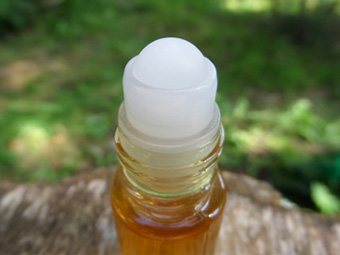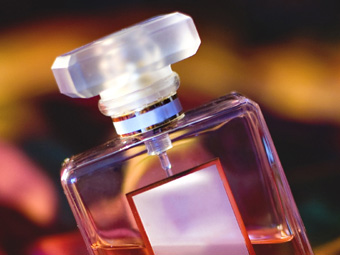|
|
Pure Perfume Vs. Synthetic Fragrances
|
|
|
|
|
|
This article is a direct comparison between the pure perfumes and synthetic fragrances on the market today. Although we're obviously more partial to the natural stuff ourselves, we've done our best to provide you with unbiased and honest page. So whether you're a little skeptical towards pure scents or have heard some troubling things about synthetic fragrances, we've done our best to answer any questions you might have.
We're going to be looking at what "pure" really means, the most common ingredients in both varieties, their effect on the environment and, most importantly, how good they actually are for your health.
|
|
|
|
|
|
|
Pure Perfumes |
|
|
 |
What are they? - Pure perfume is any fragrance derived completely from minimally processed natural materials, without any artificial or synthetic components whatsoever.
What's in them? - The only thing you should find in an all-natural perfume is pure essential oils. These are obtained from raw fruits, flowers, herbs, leaves, seeds, roots and woods through water or steam distillation. Sometimes these essential oils are also combined with a natural wax, such as soy or bees wax, to create a solid perfume.
Are they bad for me? - Unless you happen to be allergic to one of the ingredients, all-natural perfumes, made properly with high quality essential oils, have no associated health risks or negative side effects whatsoever. Some fragrances can even have positive effects, carrying across some of the aromatherapeutic properties they had as plants.
|
|
How long do they last? - The lasting power of a pure perfume is massively down to the particular oils molecular structure, even when fixatives are used. This means that although one fragrance might only last for three hours, others could still be noticeable days after an application. Pure perfume is like a vase of mixed flowers. Some scents are just more noticeable and longer lasting than others. This inconsistency across different fragrances has seen the rise of the stereotype that yes, pure perfume can be lovely, but not for very long.
All-natural fixatives can be used to help balance out the volatile nature of some pure perfume ingredients, increasing their tenacity and staying power. Natural fixatives come from resins, such as myrrh and frankincense, although a number exist from animal products, such as a whales ambergris or musk from a musk deer. Despite natural fixatives being a lot better for you than synthetic ones, many of the practices used to extract animal fixatives are cruel, often resulting in the death of the animal. Of course, these fixatives are only used at the very highest end of the natural perfume scale and, even then, they're a bit of a rarity.
Environmental effects - Apart from the unavoidable environmental damages present in everything we consume, such as CO2 emissions from transport vehicles, pure perfume is fairly easy on the planet. Plants are grown, harvested and distilled, with the most common methods releasing no more than steam into the air. They're usually very simply bottled and packaged too, with recycled packaging very prominent among the larger companies. All-natural scents are 100% bio-degradable too, and cause no damage to aquatic habitats. |
|
|
|
|
|
|
Synthetic Fragrances |
|
|
 |
What are they? - A synthetic fragrance is made primarily with artificial compounds and materials.
What's in them? - The typical high street perfume contains a combination of synthetic and natural scent compounds, alcohol and water. The majority of the artificial compounds belong to a family of chemicals known as petrochemicals. These are obtained from petroleum and natural gases.
Are they bad for me?- Unfortunately, they're not the best for you. Petrochemicals have been linked to many allergic reactions, such as eczema and asthma attacks. They have also been shown to cause disruptions in hormone production and suppress the immune system. Most worrying of all though is their reputation as a known carcinogen. A carcinogen is any substance that is directly involved in the formation of cancerous cells. According to the EU's Scientific Committee on Cosmetic Products, 2% of people suffer an allergic reaction in response to a synthetic fragrance. |
|
The perfume industry employs the use and combination of over 3100 synthetic scent compounds, with the average name-brand perfume sporting 29 chemicals, half of which are not required to be on the ingredients label. This isn't necessarily because they're hiding ingredients that are unsafe, this is mainly to hide their secrets from competitors. A recent report conducted by the Campaign for Safe Cosmetics showed that 43% of the 3100 compounds have been tested for safety by the FDA. Again, this doesn't mean that they're all dangerous, it just means that we don't know.
A study conducted by the Environmental Working Group showed that some artificial ingredients, particularly synthetic musks, are not only present in the umbilical cord blood of newborn babes, but also in toddlers. This means that mothers wearing certain scents are actually passing toxins onto their children.
Another study conducted by Environmental Defence detected an incredible total of 137 chemicals in the blood of three randomly selected newborn babies. Of these, 132 were found to cause cancer in mammals, 110 are toxic to the brain and nervous system and 133 cause reproductive and developmental problems in mammals. Although the majority of chemicals found are not present in beauty and perfumery, quite a few were, and it's important for people, especially pregnant women and people in contact small children, to understand the harmful effect they can have. This is even more true for a developing fetus, due to their lack of toxin flushing organs.
How long do they last? - Synthetic fragrances often last a lot longer than pure perfumes and are generally more pronounced overall. This is mainly due to their powerful fixatives, which help balance out the volatile nature of some synthetic perfume ingredients, increasing their tenacity and staying power. The single most popular synthetic fixative in beauty and perfumery is diethyl phthalate. A known carcinogen, phthalates have
been linked to a range of birth defects and decreased sperm counts, among other
things. That said, if you're the kind of person that only wears a spray or two every other month or on special occasions, then these are almost negligible risks.
Environmental effects - As we mentioned a little higher up, the vast majority of synthetic perfumery ingredients are obtained from petroleum and natural gases. Needless to say, the constant requirement of our
non-renewable energy sources for the production of these chemicals is very damaging
to the environment. A process called fracking is the most popular method for obtaining some of these resources.
This is where fracking fluid, a mixture of
water, sand and over 600 chemicals, including mercury, uranium and radium, is
pressure blasted into the earth to release trapped deposits of gas. The average fracking pumps over 40,000 gallons
of non-biodegradable chemicals into the earth and atmosphere to contaminate our
air and water. Only 30% - 50% of these chemicals are ever recovered, with the rest
left underground. Studies have actually shown many of these chemicals present in the drinking water of populations near fracking sites. The average fracking also requires up to 400 tanker trucks to ferry around the 1 - 8 million gallons of water necessary. Despite there being numerous other environmental damages involved in the production of artificial fragrances, we're going to leave it there. |
|